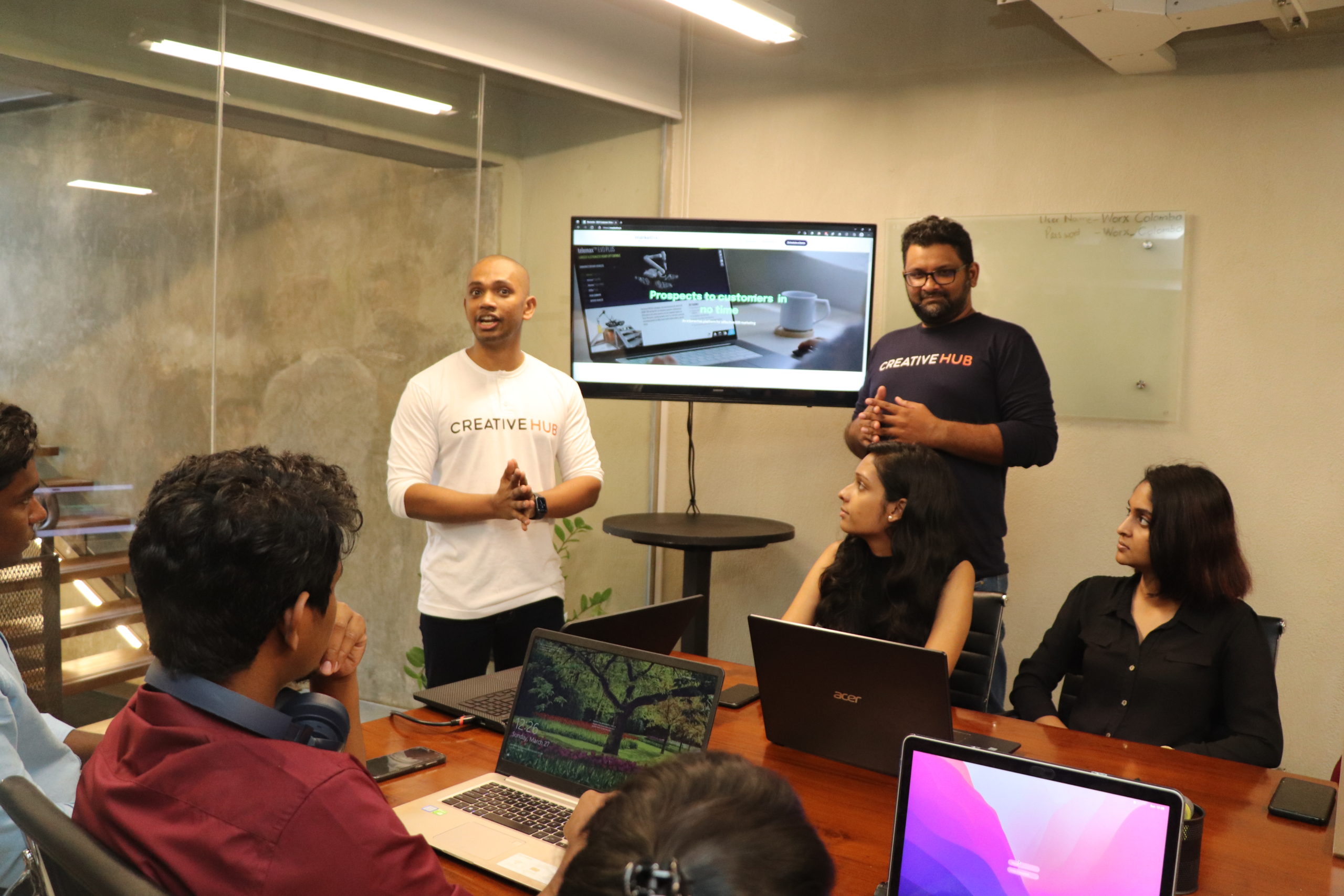With all things Web 3.0 en route, more companies are catching on the wave and learning how they can too, remain competitive in an increasingly digital world.
For an online retailer for example, having an elegant and navigation-friendly website is the minimum. Nowadays, it’s just as critical to add an extra ‘dimension’ to really make an impression on customers that land on their site. This is where VR/AR layers may come in.
Just because a customer lands on your site, doesn’t mean they will necessarily convert. Of course, there are other complexities you can add to your website to help further that process, such as reviews or special promotions. However, the research shows that customers are more likely to spend if the experience crafted around their purchase experience is notable. Especially, if customers are able to interact with a product/service as if they were there in person, and that experience was personalized for their specific needs. Rarely is a single photo and description itself enough to sell the client.
On the secondary level, companies can display videos to showcase products, services, and properties, guiding users through a visual experience. But as time is increasingly finite for busy modern folks, being able to interact and engage with products/services in real-time, proves to be of rare value.
Digital marketing, with the subsect of Martech, has become a no-brainer, essential tool for 58% of small businesses according to the Manifest. However, traditional digital marketing has yet to arrive at pace with the rapidly growing landscape, that is, virtual and augmented reality. In the near future, it’s no longer something that companies can avoid.
As the world changes, how we market and appeal to customers must change with it. As someone who’s been in the tech world as young as ten years old, Irosha de Silva has witnessed a fair share of technological evolution in his life. As an entrepreneur in the Martech space, he remains insistent that companies must always be ready to adapt to the changing demand, and not be afraid to tinker with different elements. However, at the heart of everything Irosha believes that the aim of technology should be to provide purpose for humanity.
Creative Hub is a Martech company that was started in 2017, and since then has grown to service multiple countries across North America and Australia. Irosha sat down with us to discuss how his company is navigating the Web 3.0 and metaverse fiasco, the importance of diversity, and how they intend to stay ahead of the curve.
Interviewer: Can you tell us a little about your background and what influenced your journey to entrepreneurship?
Irosha: CreativeHub began in my garage. Now five years ahead, we have a team of 50, and up until now completely bootstrapped. In terms of my background, I’ve had a very strong tech background since my childhood. I started coding when I was around 10 years old, starting with VB6 and MSA basic languages, then from there, moved up in terms of learning Java. In fact, I became the world’s youngest Sun Certified Java Developer back then. Although I had a tech background, I did not want to pursue the path of becoming a developer because I always had the knack for starting something on my own.
Soon after I completed my education, I started a couple of startups with friends, which had imminently failed. One I could say failed miserably. However, those failures gave me the edge to pursue something greater, so that’s where Creative Hub came in. I would say the combination of my tech background, expertise in business development, and learning from my past startup failures is what made CreativeHub.
Interviewer: How has Creative Hub been different in terms of profitability?
Because we’re completely bootstrapped, we had to remain very consistent in our profitability strategy. Most startups don’t look at profitability. We’re also taking a more long-term approach and delving into different niches. Instead of just service providing, we’re also getting into the product development space.
Interviewer: There are a ton of marketing agencies, especially in recent years. What was the inspiration to build a “creative” hub? Would you say you guys were ahead of the ‘Web 3’ trend above other competitors?
Irosha: I don’t think we started with Web 3 in mind, but we’ve simply been incorporating it into our offerings. We started with the very basic things in terms of building websites for clients and doing simple digital marketing services. We built our ERP system as well which we were providing to our clients. I would say the introduction of Web 3 presents an opportunity for CreativeHub to become a pioneer in the Web 3 service providing space. It started with us creating virtual tours and virtual showrooms, which opened us to more possibilities and avenues of what Web 3.0 has to offer.
We’ve come a long way since then. We help our clients build Web 3-oriented services and platforms. At the same time, our signature platform is one that’s called Marketrix.io which simply helps sales teams across the world make their sales pitches very interactive, with VR/AR features. We are driving things towards how you can do your sales pitch in the metaverse and aggressively become one of the leading B2B Web3-oriented platforms.
Interviewer: In the future, brands will have to turn towards AR/VR to stay ahead of the curve, especially in such a saturated advertising environment. Can you tell us how CreativeHub aims to stay ahead of competitors?

Irosha: I strongly believe both AR and VR have a lot to play in terms of the future of advertising and its evolution. There’s a lot of jazz that’s going on in terms of NFTs and making everything virtual and things like that. At CreativeHub, we carry a different type of view; that is we‘re very much passionate about this thing called purposeful technology. How we can build technology that helps people to become better, purposeful versions of themselves.
We are actively going into the product development space. Within the product development space, this particular platform that I mentioned, called Marketrix.io, it’s helping a lot of businesses convert their traditional sales pitch into a complete sales pitch that’s very interactive and makes the end potential customer very engaged.
Sales pitching is an essential thing for any business. However, they generally follow a particular format that’s not exactly designed to engage the customer—more like I’m going to present this slideshow to you, and you’re going to listen. Especially with virtual sales, the degree of interaction is even more limited. I’m probably screen sharing and showcasing some marketing material to you, which sometimes you might have switched off your video. You’re on your phone instead of engaging with the material I’m showing you.
We found this phase of sales to be dysfunctional. Sales teams across the world are constantly getting rejections. This is why we’re playing an active role in terms of providing technology to help sales teams get the potential customer to engage with the sales pitch through interactive technologies. This interactive technology is meant to help them convert leads into customers.
Interviewer: You creatively showcase your team in Sri Lanka and India through both a video introduction, as well as in an interactive VR room.
Can you describe your rationale for this?
Irosha: Essentially, it’s also got to do with the business model. Our operations teams are based in Sri Lanka and India and we work with many clients in the US, Australia, UK, UAE, and Japan, and we just recently started a branch in Canada.
Part of the value in having our operations teams based in Sri Lanka and in India is that we’re able to offer a very good cost-benefit solution. Most of the operations teams that we hire are based in these two locations, but now we are exploring setting up operations teams in Malaysia and Bangladesh as well. These are some of the future expansions that we are looking into. Mostly in terms of the other locations, like Canada, the US, and Australia, we work with the locals on the business development front.
It has very much created a diverse culture, and the benefit of such is the cross-cultural learning that’s happening— where teams are able to work with different teams. It has overall proved to be quite beneficial for the business and our clients are quite satisfied as well.
I believe most of our clients find it to be authentic when we are transparent in our process and in the people involved in it. They get a better understanding in terms of how essentially their final product or the service is actually materializing.
What personally drives you?
Irosha: I am very much inspired by the purpose of life. Since I am in the tech space, and I build technology-oriented companies, I want to utilize technology to help people become better, more purposeful versions of themselves. This is a bit of a long game, and it’s not something that can be achieved overnight. This particular product that we have built is called Vhesta. It’s a space that empowers people to become better, purposeful versions of themselves by creating a stepping stone, by facilitating mentor relationships. That’s a starting step for realizing my purpose of helping others find theirs through technology.
Conclusion
As the conversation came to a close, it became evident that profitability was definitely not the sole driving force behind the MarTech company, CreativeHub. As we can observe through history, some of the most innovative companies operated on inspiration to help further humanity. That’s the essence of technology at its root.
As the digital business side of things becomes increasingly complex, it’s hopeful to know that there are companies out there that have already started laying the stones to help others catch up to the frenzy.



